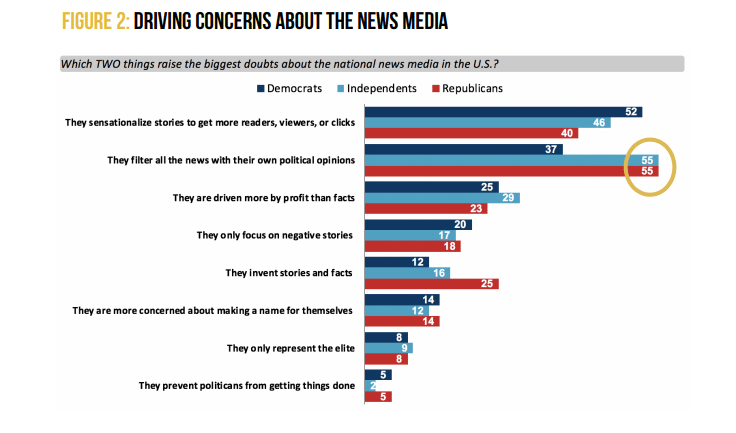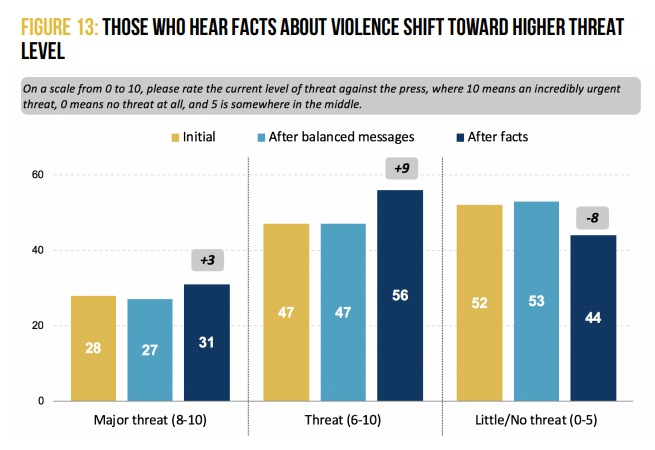As part of its commitment to a robust free press, the Reporters Committee for Freedom of the Press surveyed 2,000 American voters and conducted four focus groups in late 2017. They sought to quantify public perceptions of press freedom and threats against the press. They conducted the research before the attacks on the Capital Gazette in Annapolis in June 2018, an event that RCFP felt gave their work more significance.
Overall, the research found that the U.S. population views press freedom much more positively than those who advocate for protecting the press. The public is more concerned with bias and influence than threats brought on by negative rhetoric (including that from President Trump), lawsuits and threats against leakers, or the rapidly changing economic conditions affecting the press. Fortunately, RCFP also found in the data insights to suggest what messages will resonate with the public to help change perceptions of the value of a free press and build support on an ongoing basis.
The overall findings suggest that most people still value news and an independent press. Though trust in the national media is lower than in the past, “nearly all voters (95 percent) agree on the importance of having a free press.” This is true across political party affiliations. However, as with so many issues in the current partisan atmosphere, voters of different political persuasions have distinct concerns about the news they consume. For example, Democratic voters are most concerned about media “sensationalizing” stories, while Republican and Independent voters are most concerned about news source bias. These partisan distinctions inform some of the recommended strategies to raise public awareness of the threat.

RCFP identified six steps to shoring up public support for press freedom. Three of those are designed to reach specific partisan groups: 1) Addressing perceptions of bias in news coverage, 2) not making President Trump the focus and 3) making a good faith effort to reach out to a diverse audience. However, the other three recommendations appeal to a broader audience, regardless of political beliefs.
- Highlight the press’ role to inform. When asked to select the strongest statement “as a reason to defend the freedom of the press,” 77 percent of survey respondents selected one focused on providing important information. While most news organizations would likely disagree with perceptions that they are not providing important information, it is a helpful reminder to the industry to focus on reminding people why they do what they do.
- Illustrate the threat. Most Americans, of all political stripes, don’t see the threat to press freedom. In RCFP’s research, survey participants were asked their views before and after hearing facts about violence against news organizations. Upon hearing the facts, there was a nine-point increase in the participants’ ranking of threat perception.

- Promote accountability when mistakes are made. Across the board, survey respondents want to see news organizations acknowledge their errors. Seventy percent of all respondents – and wide majorities of each sub-group – say that acknowledging mistakes is important in what sources they trust. This fits in to a broader pattern of media literacy, and is again a useful reminder that audiences don’t know the news business as well as journalists and news organizations.
In conducting this research, RCFP acknowledges that trust in news is presently low, but that research is being done around changes that individual organizations can make to help turn the tide. The Alliance has been working to bring together organizations that focus on improving trust, but this study highlights small changes that can be implemented easily. If you are working to improve trust in your community, let us know on Twitter @newsalliance.
